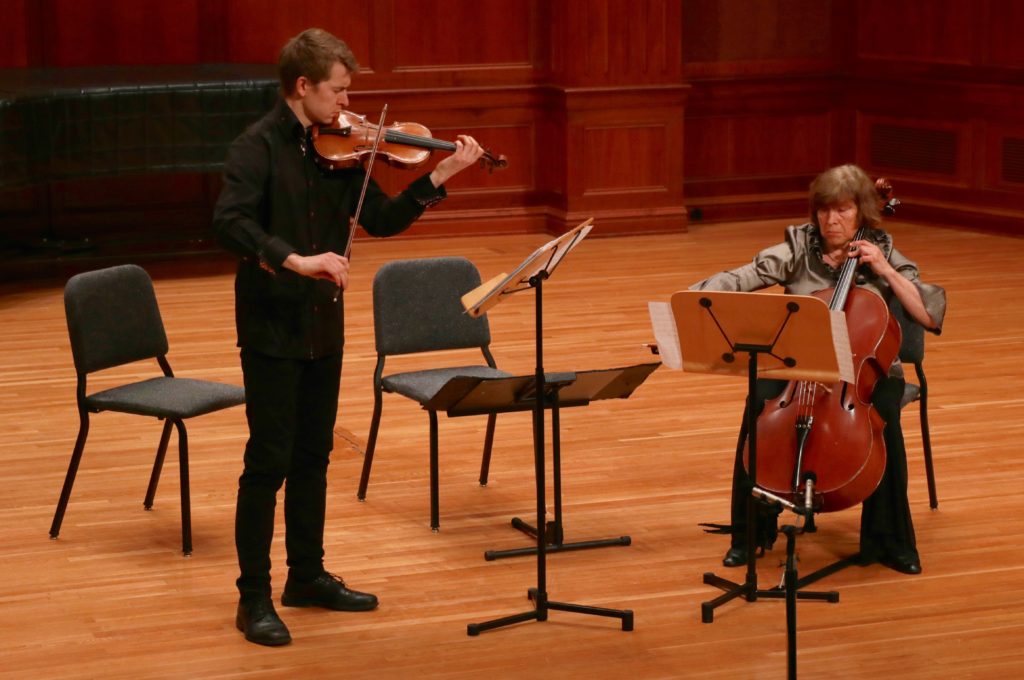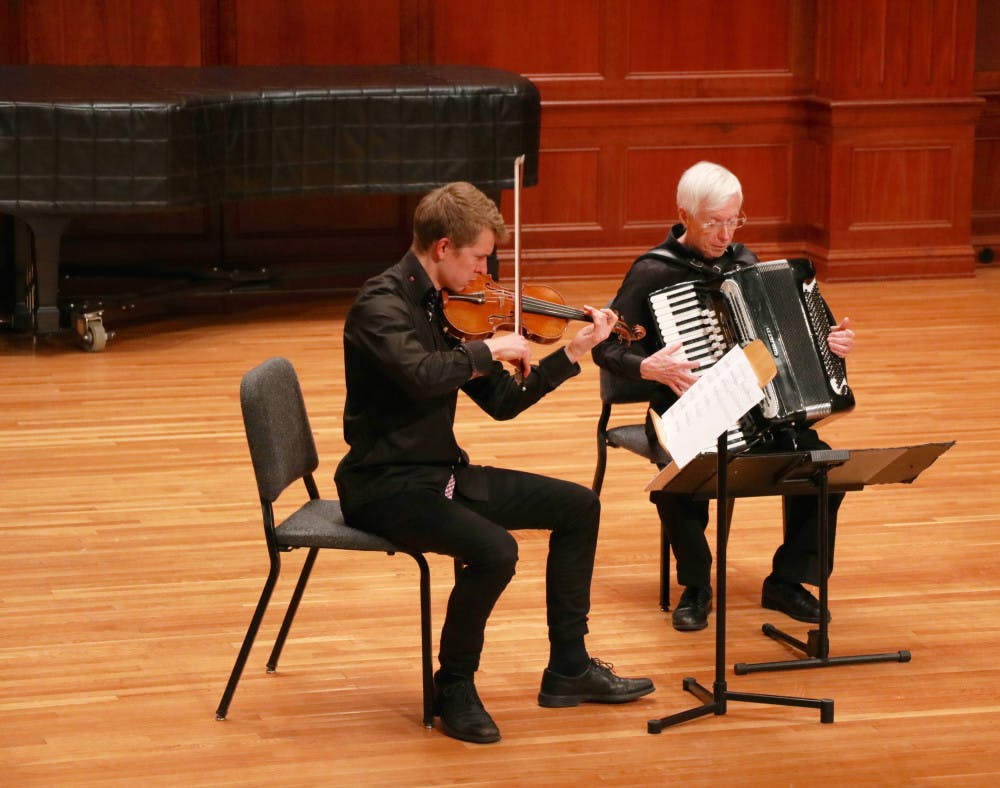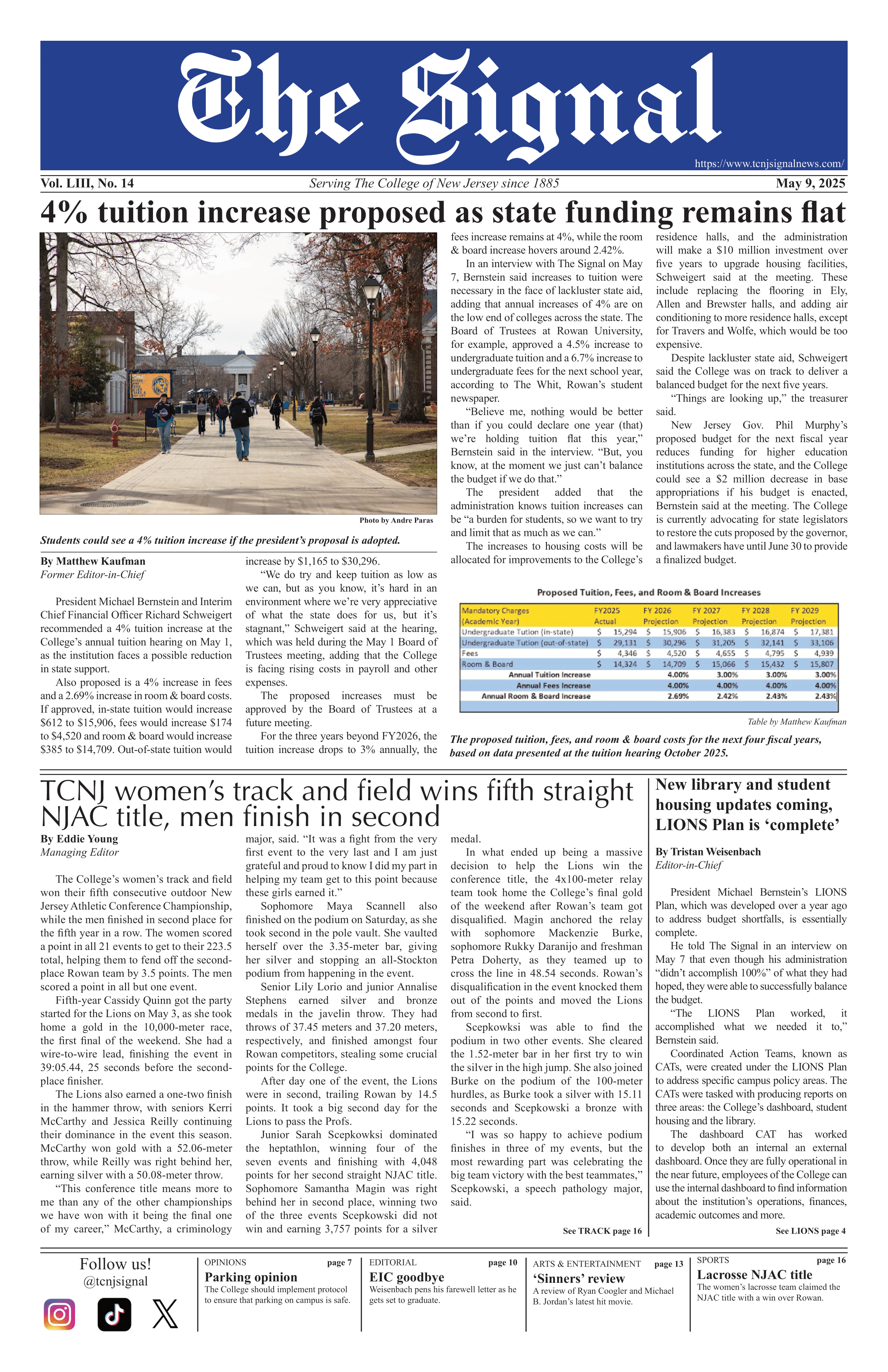By Heidi Cho
Arts & Entertainment Editor
Three tight-knit musicians turned a frigid evening into a heartwarming and breathtaking night at Bellows and Bows: A Potpourri of Chamber Works for Violin, Cello, and Accordion in the Mayo Concert Hall on Saturday, Feb. 3.
Robert Young McMahan is an accordionist and professor of music theory at the College.
McMahan is a long-time friend of cellist Cecylia Barczyk, and together with violinist Emmanuel Borowsky, Barczyk’s son, the trio performed harmoniously.
“Triologue” was the first piece of the night, in which all three musicians played together.
“It’s a combination of instruments you don’t get to hear a lot, especially in the classical world,” said Meaghanne McBride, a sophomore music major and a student of McMahan.

“Bambuco Almirante” is a Colombian folk dance made famous by the musical ensemble of two brothers known as Los Hermanos Martínez. Borowsky transcribed the piece originally intended for piano and two violins to fit one violin and cello.
The next piece, titled “Spanish Rhapsody, op. 9” was written to show off every possible trick a skilled violinist can produce with the instrument.
Borowsky is indeed an extraordinary violinist that made the instrument sing in a solo piece that exemplified the skills he has honed over a lifetime of practice.
Borowsky started studying violin when he was four years old. He represented North America at the World Child Prodigies Concert. Borowsky and Barczyk have played across the world, and applied their practice and worldliness to the concert.
“Prelude and Sarabande” provided a respite from the quick and lively tempos of the preceding pieces. McMahan introduced the piece as a “peaceful meditative moment in the program.”
As the only accordion solo of the concert, McMahan proved his skills as both an accomplished accordionist and composer.
McMahan’s wife, a classical pianist, baroque recorder player and West African percussionist, knows how much her husband has dedicated to his instrument.
“Bob (McMahan) is as committed to his instrument today as he was that day fifty years ago, when he walked so easily into my life and never left,” she said.
“Introduction and Allegro” was created by Mátyás Seiber, an established and accomplished Hungarian composer who wrote most of his pieces in the U.K.
“2 Chôros bis, W227” was originally intended to be an encore piece to be performed after a concert of pieces, all concieved by Brazilian composer Heitor Villa-Lobos.
Chôros is Brazilian street music, a type of music characterized by “definite and defiant rhythms,” or “spicy music,” as Borowsky called it.
Designed to pull passerbyers from the streets, the wily and unpredictable nature of the piece similarly had audience members on the edges of their seats.
“Dance Suite for Two” has traditional Scottish folk elements with a distinctly Irish essence, split into multiple parts. Charming and heartfelt, it was a breath of fresh air in the indoor concert hall.
By intermission, McBride found “Introduction and Allegro” to be her favorite piece.
“It was very lively. It was fun. It had a lot of character,” McBride said. “It was really great to see my professor performing.”
“Romp 5” premiered in New Jersey, meaning it was never publicly played before this concert. The piece was composed by McMahan as part of his “Romp” series named for the “rambunctious, somewhat tongue-in-cheek nature” that the pieces share, according to McMahan.
According to Robert Seltzer, a senior music major and former student of McMahan’s, “Romp 5” was a natural and powerful finale written by a professor who “knows so much about everything music.”
This was the first time Seltzer has heard McMahan play live in his time at the College.
“(Romp 5) was amazing, super, super jarring… it was powerful and emotional,” Seltzer said. “It did a good job blending all three instruments. It sounded so natural.”
The musicians received a standing ovation from the audience of students, both current and past.
“Playing for music for a pleasant audience is very rewarding,” Barczyk said. “(The audience) shared a lot of interest and understanding for music — it’s the best reward.”







